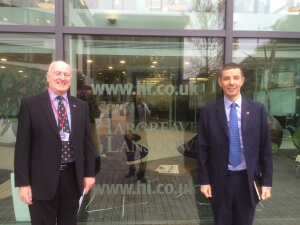Social trading is dead – apart from one very smart company. Here is why
A very comprehensive look at why social trading has been consigned to the history books and what has caused it.

Five years ago, the off-the-shelf MetaTrader 4 platform’s popularity had burgeoned and given rise to the establishment of a plethora of small retail FX brokerages, many with their operations registered in offshore jurisdictions and their workforce in the Middle East or the CIS countries, and many with fully regulated operations in Cyprus.
The MetaTrader 4 platform and its standardized format as a third party end to end solution had empowered a very different type of company to those of the upper level establishment that had been honing their technology and financial markets connectivity since the late 1980s in that a small office with newcomers to the market could operate on a very low initial budget, however, countering that virtue was the ensuing crowding of the retail sector with also-rans and similar products that were operated by similarly new entries to the FX industry.
Without the public listings and several decade institutional level expertise in financial capitals of the world, backed by a Queen’s English, top quality formal education, and one of Britain or North America’s finely tuned proprietary trading solutions aimed at a loyal domestic audience that costs tens of millions of dollars to develop, many firms of mixed virtue managed to garner a profit very quickly, but ultimately found themselves without a value proposition, competing against several hundred almost identical companies.
Those several hundred almost identical companies has expanded to 1231 as of 2016. According to FinanceFeeds research, there were 1231 active MetaTrader 4 platforms in operation globally.
All offer the same trading system, and most are using similar marketing and client onboarding techniques, that being acquiring leads via digital marketing and then converting them to live clients by telesales methods, and not being experienced electronic trading firms in most cases, the enticement practices had been based on bonuses, spread reductions and marketing gimmicks, resulting in a one-off client that loses his initial deposit, which becomes the broker’s profit, and then the broker has to look for more clients to replace those one-offs.
Thus, social trading was born.
Social trading was intended to empower novice traders to take more positions by following, manually or automatically, a lead trader who is, as far as the novice trader is concerned, an expert, thus giving something of a placebo effect in that the trader is less nervous and will likely either set the platform to trade automatically, or follow, in some degree of comfort, the trading of what has been marketed by the social trading platform as an expert.
That expert may not be so, as quite often they are retail traders that are paid an IB commission for acting as lead trader and generating volume, which leads to conflict of interest.
This, however, is not why social trading is a thing of yesteryear.
The social trading era has been consigned to the metal can of the ether and has become the hallmark of the early Millennial years in the same way that the Motorola cellphone and Filofax were consigned to the history books along with pinstripe suits during the analog financial market years of the 1980s.
The social trading era came to an abrupt end for many reasons, some of which were as a result of the evolution of the new age of retail trader which grew up in the early part of this Millennium as a novice when MetaTrader 4 was first unveiled, and has now become advanced, knowledgeable and self-directed, the other is the bungling displayed by some of the providers of social trading platforms.
OANDA Corporation’s failed attempt at taking its fxUnity product to a wide audience over four years ago is a case in point. The company is a technological tour de force, yet it brought ruinous R&D costs into the boardroom when it canned the fxUnity proprietary social trading platform a very short time after launch, before then becoming embroiled in the catastrophic purchase of the Currensee social trading network which was wound down and discontinued very soon after its acquisition.
Compare that to the self-directed traders that favor proprietary platforms and are experienced in navigating the markets electronically, and OANDA’s migration of 2,200 Tradestation users onto OANDA’s fxTrade platform last year when IBFX exited the US market demonstrates that the same company could not engage traders on social platforms, but was absolutely able to benefit from the onboarding of astute, self-empowered traders who favor a high quality brokerage environment and proprietary platform.
Whilst social trading subsided, robo advisor became the next buzzword.
Marketing upstarts (pass me my earplugs please) will constantly over use the word ‘robo-advisor’ in their content marketing and parlance when addressing companies on what stance to take in order to differentiate their products.
New marketing-led firms including Capital U, Covestor, Wealth Front, Folio Investing, Betterment and Merrilledge have recently been establihed, with the emphasis being on the perceived robotic capability but with no track record and no long term high value client base. But where are they? Tumbleweed can be heard blowing across the floor.
Companies such as Hargreaves Lansdown, which is Britain’s largest financial services company and has its very own proprietary Vantage system that allows its retail customers – all of whom are in Britain – to manage their own portfolios from one platform including a range of CFD products under the IG Group white label HL Markets, intentionally eschewed going down the robo route.

Hargreaves Lansdown is astute and knows what its clients want.
One year ago, before the over-styled marketing ‘gurus’ began to froth more than their skinny lattes about the robo advisors that they do not properly understand, Hargreaves Lansdown decided to listen to its customers and not proceed with robo advice.
In October 2015, the company asked its clients whether they would be prepared to pay for a low cost online advice service. The answer was a resounding no.
Hargreaves Lansdown suggested at the time that such a service would cost between £100 and £400 and considered widening its existing non-advised portfolios into a wider advice proposition.
Ian Gorham, the firm’s CEO of the time, stated “People do not want to pay for advice.”
“There is no chance that robo is going to replace self-directed or advised” he said, concluding that robo advice will not replace execution only platforms.
Hargreaves Lansdown told FinanceFeeds today “We don’t have a so called robo advice proposition. We use technology to help people choose investments. This is a non-advised service.”
“The FCA’s Financial Advice Market Review is still ongoing and as part of this there could be some changes to the boundary between advice and non-advice. It follows once the Review is complete and the outcomes known firms will look to adapt accordingly.” – Danny Cox, Hargreaves Lansdown
Retail FX trading is a rare beast in that it embodies not only fluid and instantaneous access to extremely liquid financial markets but it combines this with technological infrastructure which means that it is not just a financial service but a technological and mathematical science.
Today, it is a science which a large proportion of retail traders understand clearly, and, as has been noticed by FinanceFeeds for quite some time, this has led to the passing of the social trading era, which was once an engagement tool to bolster the confidence of novices.
Even the platform companies which develop the software that enables retail trading have packed it in. Just a few months ago, Tradesmarter launched Social Radar, in conjunction with LeadDaWay. This encompassed purposefully combined technology with marketing expertise in order to create the Social Radar automated trading application, taking into consideration some key broker-trader engagement Key Performance Indicators (KPI).
Result? Not much. Tradesmarter CEO Yoni Avital’s technological expertise had marked Tradesmarter out as one of the very best platforms in that sector of the industry, however he has now gone on to found Backpack.io in Singapore and is partnering with larger companies, including CFH Clearing, to provide genuine institutional solutions.

In China, a country in which almost every FX industry participant is an investor rather than a trader in that they do not trade their own account, it would make sense that social trading would have taken off. But it hasn’t.
Instead, Chinese investors entrust their vast portfolios to wealth managers who operate as introducing brokers to large and well respected electronic trading companies including Saxo Bank, FXCM (China), with liquidity from Advanced Markets, Swissquote, Sucden Financial, and Saxo Bank. They do not trade from home automatically using social platforms.
Many end users do not know or have any regard as to which brokerage is actually providing the FX dealing service, which execution model is being used, or where the payment gateway is sending their funds, as they are totally reliant on the IB for all customer facing and trading matters.
In the provincial regions, a particular ritual takes place among IBs when meeting a new brokerage for the first time. Specifically, politeness, manners and a poker-face which does not leave a residual feel as to whether a deal can proceed or not are the order of the day.
Meetings are never conducted in meeting rooms or in front of presentations which show the company’s trading prowess, commercial performance or business model, but instead in often palatial offices several floors above the Yellow River, on a luxurious sofa with an elegant wood and marble table with built in tea-making equipment. There is always more than three representatives of the company, however only the CEO or owner marks out his position, the others remaining modest and providing a constant flow of fresh tea in traditional Chinese cups which can be sipped, however there is much more to this than straight forward politeness.
Hence it is an institutional level face to face relationship between IB and client, and the broker/client relationship is completely B2B as in broker to large IB. Most of these companies are as large, if not larger than the brokers with which they place business.
The only one company which has mastered this is eToro.
eToro gained an investment from Ping An Ventures, part of China’s Ping An Bank, two years ago and shortly afterwards, FinanceFeeds met with Lance Liu, Head of Investment at Chinese venture capital firm Ping An Ventures in Shanghai.
Ping An Ventures is a very large enterprise, which was established 25 years ago. At the beginning, the company’s core business was insurance, which it concentrated on for the first ten years. Since then, the company has built three pillars which are insurance, banking and investment and all the technology that backs financial services.

FinanceFeeds asked Mr. Liu what the rationale was for such an investment on eToro, to which he replied “Our core business is investment in financial services firms, and there are many good business models overseas with good technology which China does not yet have. We have a large market to serve so we have a remit to invest in new technology and foreign business model and bring it into China.”
“eToro’s collaboration with us is on two fronts” said Mr. Liu. “One is a cooperation on the social investment side, whilst we also invested in the fintech side of their business.”
Mr. Liu explained “We are very much a fintech company so nowadays, the technology aspect of finance is our priority. There is a very large fintech incubator within Ping An Group. LUFAX (Lujia Zui Financial Asset Exhange) is a large enterprise that was started with investment from Ping An, and that company rose to become the largest B2B platform that now concentrates on asset securitization. I was also involved in the acquisition of the two payment companies in 2011. We injected our own management structure, and merged them into one company.”
“For example, with regard to peer to peer investing and lending, we are not only investing, but we also incubate companies in that sector” said Mr. Liu.
“In China, the lower tier of the customers is underserved. The wealthy are well-served by wealth management companies or banks, yet the mass market remains underserved. Many people who make up the mass market want to invest in diverse products and overseas instruments including equities and stocks, but there have been less companies to serve that end of the market.” – Lance Liu, Head of Investment, Ping An Ventures.
A year later, in January 2017, FinanceFeeds met with Jasper Lee, CEO for the Asia Pacific region at eToro, a company which for many years has trodden a very different path from its peers, and to great gain, especially in today’s post-social trading era in which separate platforms that provide social trading to retail customers whilst charging a license fee to brokerages have become extremely passe.
During our meeting in January, Mr. Lee explained “We started the whole operation in 2016, mainly as a direct result of the investment from PingAn. In 2015 we gained investments from Sperbank and Commerzbank as well as PingAn which is also a bank.”
“There are sutble differences between Chinese platform functionality compared with that of other regions that had to be taken into consideration too. For example, Chinese traders see the up and down indicators in different colors to those offered on platforms ovesees. In China, if the market moves up, the indicator is displayed in red, wehreas if the market is going down, it is displayed in green which is the opposite of the rest of the system used in the rest of the world” – Jasper Lee, CEO APAC, eToro
Apart from the substantial effort required to market eToro to a Chinese audience, gaining investment from what is not only a bank and VC firm but also a vital Chinese partner was a strategic masterstroke for eToro.
“Due to the investment by PingAn, we are now able to utilize our mutual relationship to advantage” said Mr. Lee. “There are several different subsidiaries under the PingAn group, which include PingAn Security and LUFAX. Our synergy with these divisions was sealed in December 2016 with a memorandum of understanding having been signed” said Mr. Lee.
“With different subsidiaries we did differnt things. With PingAn Securities, we conducted some seminars. The purpose of these were to educate people in China who invest in Chinese stock, to invest in global stock, whilst abroad, we offer Chinese listed companies to Chinese traders in the US, such as Alibaba, JD, which Chinese people are familiar with so they can trade with confidence” he explained.
eToro gains access to single plaform for multi-product financial services via PingAn TOA
Mr. Lee then showcased to FinanceFeeds how eToro was able to launch an education website where the firm can provide educational resources to clients about oversees investments. PingAn’s TOA system, which provides a single log in for users, meaning users can log in to eToro platform so they can access all of the services provided by PingAn Group with just one log in.
“We have also signed a memorandum of understanding with LUFAX, and we aim in 2017 to operate together to provide services to Chinese customers who live oversees.” – Jasper Lee, CEO APAC, eToro
LUFAX has been one of the largest global FinTech firms over recent years, and the company hase a huge base of Chinese users who live outside China, and it is widely accepted that among the diaspora community there are numerous people seeking oversees investment very eagerly.
An example of that is Toronto, a city in which ove 600,000 Chinese nationals arrived between 2001 and 2009, many of which invested heavily in large scale commercial real estate and luxury high rise condos, as well as poured massive capital into Canada’s banks, saving it from the financial crisis. Far from Canada’s conservative fiscal policy, it was the Chinese investment that bolstered the economy, and now several years on, those investors have massive monthly income from rental and lease revenue, that they would trade in securities.
In the case of social trading, revolution has taken precedence over evolution and indeed, unless its technological underpinnings are utilized in an institutional environment, with a vast distribution channel, it will be viewed via the rear view mirror as one of retail trading’s past milestones.









